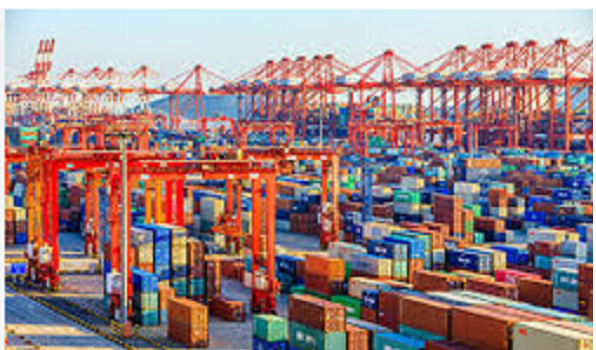‘It‘ll be chaotic’: U.S.-China tariff pause likely to prompt scramble for businesses to deliver rerouted goods, experts say
A temporary U.S.-China tariff deal will send businesses scrambling to clear freight from bonded storage yards, warehouses and ships that was previously rerouted to third countries such as Canada or held back to avoid levies, experts say.
They also expect Monday’s agreement, which offers a 90-day reprieve from the latest round of sky-high reciprocal tariffs between the U.S. and China, to drive up global transportation costs and create headaches for consumers.
In the deal, the U.S. promised to cut tariffs imposed on Chinese imports to 30 per cent from 145 per cent, while China agreed to cut duties on U.S. goods to 10 per cent from 125 per cent.
In the weeks prior to the agreement, customs brokers and logistics specialists across Canada reported a spike in businesses looking to reroute packages to the country. Many firms were exploring bonded storage solutions, where imports could be held without immediate payment of duties until U.S. President Donald Trump rolled back the tariffs.
Flexport, a platform that co-ordinates global logistics, reported a 50-per-cent increase in consignments to Canada from China in just one week in April, with Amazon and Walmart‘s third-party sellers also reportedly hoarding goods in Canada.
While the latest resolution is expected to restore some semblance of normalcy to trade flows, businesses will also be bracing for a new set of challenges: soaring shipment costs and delays.
“In the short term, this will be almost like COVID 2.0,” said Saibal Ray, professor of supply chain management at McGill University, referring to the disruption of global supply chains during the early stages of the pandemic.
”There’s a huge amount of inventory stockpiled, and they will want to get it moving as quickly as possible because you don’t know if in 90 days something else will come up again.”
Steve Bozicevic, chief executive officer of A&A Customs Brokers, predicts that companies will see surge pricing across the board as ground transportation, trucking and port handling costs spike in response to an influx of demand and reduced capacity.
Stockpiles of goods are set to stream out of warehouses and docks across the U.S., Canada and Mexico, as well as China, as products that had been stored or left to bounce between ports to dodge punishing U.S. tariffs start to resume their journeys.
This week, containers bound to Los Angeles from Shanghai are going for around $2,700 for a 40-foot container, Mr. Bozicevic said. He predicts a temporary surge to $5,000-$7,500 for the same service during the 90-day reprieve.
“During COVID, we saw them as high as $18,000 – express lines were in excess of $20,000,” he said.
“It‘ll be chaotic for three to four weeks,” Mr. Bozicevic said, referring to shipments that have been stuck at major U.S. ports or stored in nearby warehouses across North America.
Other businesses have simply chosen to bounce their goods from port to port in hopes of a resolution to the trade war.
“The first gap will be getting things out of bonded warehouses and shipping yards – trucking availability will be limited, which will drive prices up,” Mr. Bozicevic said. “The second gap will be clearing up the ships that are transporting the freight in question.”
The ocean freight rates are generally set, but the ground transportation will surge.
“And then we’ll hit another wave when all the China-origin freight that was paused starts flooding back in,” he said. That second surge is expected to last another six to eight weeks, adding bottlenecks to supply chains in addition to hiking transportation costs.
For consumers and other end-users of the goods floating in limbo, which range from toys, Christmas decorations and Amazon knick-knacks, to chemical and automotive supplies, this will likely translate into delays and reduced selection.
“What we learned from COVID is that supply chain shortages ripple through the economy … this stop-and-start process will most certainly have an impact in terms of availability and cost of products,” said Fraser Johnson, the Leenders Supply Chain Management Association Chair at Western University’s Ivey Business School.
The uncertainty of the next 90 days will also continue to discourage businesses from planning for the future in terms of investing in new technologies, growing their workforce or developing their business.
Whether organizations decide to eat the costs of added logistical hurdles or pass them on to consumers, the impacts will be felt across the board, Prof. Johnson said: “It‘s inflationary – someone has to pay it.”
This article was first reported by The Globe and Mail















